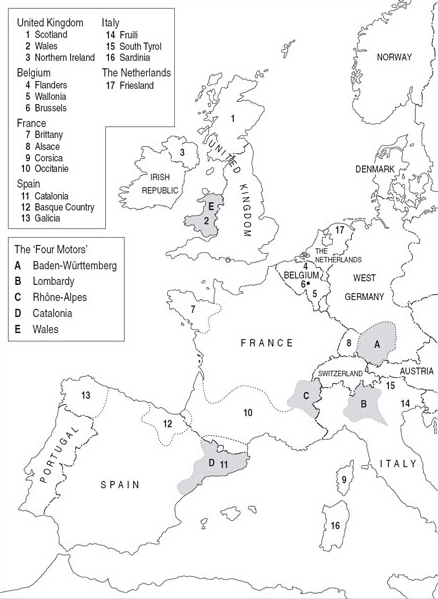3.2 Growth of Europe's regions
In the 1960s and 1970s some states, including the UK, contributed to politicising regional economic development by first defining ‘problem regions’ (for example, Central Scotland) and then failing to solve their problems. Here central states were still setting the agenda, but increasingly the lead was taken within the regions themselves, especially in regions with past experience of autonomy or their own nationalist tradition.
Nationalism had a ‘bad press’ from the 1930s and 1940s, thanks partly to the extreme nationalism of Nazi Germany, and this was a low point for national separatist movements in Britain and elsewhere in Europe, though in Spain regionalism was directly weakened by Franco's repressive centralism. In contrast, by the 1960s there were autonomist and separatist movements active in varying degrees across Western Europe, from Ireland, Scotland and Wales in the north-west, through Brittany, Flanders and Wallonia, to the Basque Country, Catalonia, Corsica and parts of Italy (Figure 2).

Note: The ‘Four Motors’ are the four main high-tech regions that came together in 1989. They were subsequently joined by Wales.
